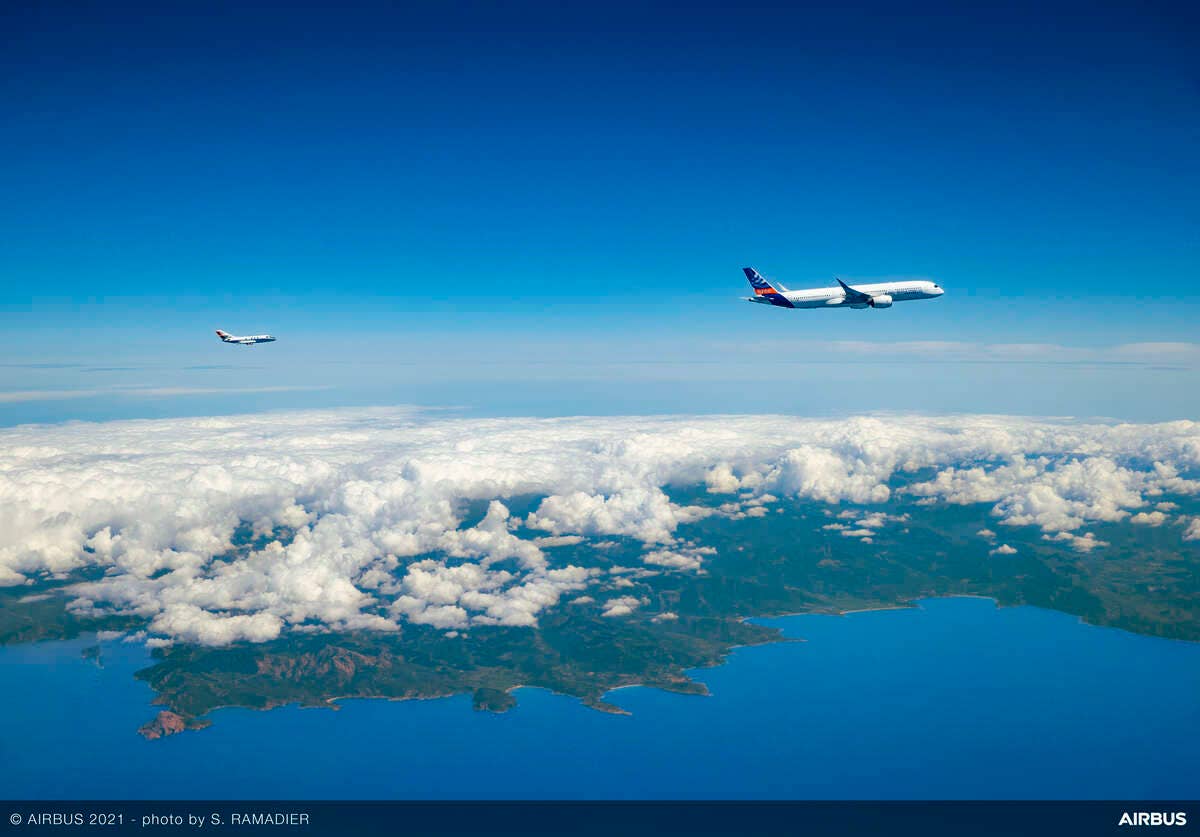Study: SAF Reduces Aircraft Contrails, Soot Particle Emissions
When compared to jet-A-1 fuel, SAF significantly reduces the climate-warming effect of condensation trails, according to the findings.

A350 flight test aircraft followed by DLR chase plane during ECLIF3 flight campaign. [Courtesy: Airbus]
The use of 100 percent sustainable aviation fuel (SAF) in commercial airliners may reduce the impact of contrails in addition to reducing the aircraft's carbon footprint, according to a new study.
The "Emission and Climate Impact of Alternative Fuels," or ECLIF3 study, was conducted through a collaboration with Airbus, Rolls-Royce, the German Aerospace Center (DLR), and SAF producer Neste.
Recent test flights of an Airbus A350 and DLR Falcon utilizing 100 percent SAF "show a significant reduction in soot particle emissions and formation of contrail ice crystals compared to using conventional aviation fuel," Neste said.
The study found that when compared to a reference jet–1 fuel, the number of ice crystals per mass of unblended SAF consumed was reduced by 56 percent, which, the company said, could significantly reduce the climate-warming effect of condensation trails—also known as contrails.
“The results from the ECLIF3 flight experiments show how the use of 100 percent SAF can help us to significantly reduce the climate-warming effect of contrails," said Markus Fischer, DLR divisional board member for aeronautics.
Mark Bentall, head of research and technology at Airbus, also weighed in on the study.
“This is a very encouraging result, based on science, which shows just how crucial sustainable aviation fuels are for decarbonizing air transport,” Bentall said.
Contrails and Climate
Contrails are formed by supercooled water droplets that immediately freeze around condensation nuclei such as soot from aircraft engines. These contrails become visible in the sky as condensation trails. The ice crystals in condensation trails can persist for several hours in cold, humid conditions at altitudes of about 8 to 12 kilometers (about 26,000 to 39,000 feet), forming high clouds known as condensation trails or cirrus clouds. These clouds can have a local warming or cooling effect, depending on the position of the sun and the nature of the underlying surface.
According to Neste, a few contrail hot-spot regions are responsible for a large proportion of the warming effect. Worldwide studies have shown that noncarbon dioxide effects—including contrails—could account for a significant proportion of aviation’s overall climate impact.
SAF is currently produced mainly from plant-based or waste-based renewable raw materials such as feedstocks, but in the near future could also consist of e-fuels and renewable hydrogen produced with renewable energy. Many of these sustainable aviation fuels are free of compounds referred to as "aromatics." Fewer aromatics in the fuel means less soot in the emissions and, therefore, fewer ice crystals in the condensation trails.

Subscribe to Our Newsletter
Get the latest FLYING stories delivered directly to your inbox






